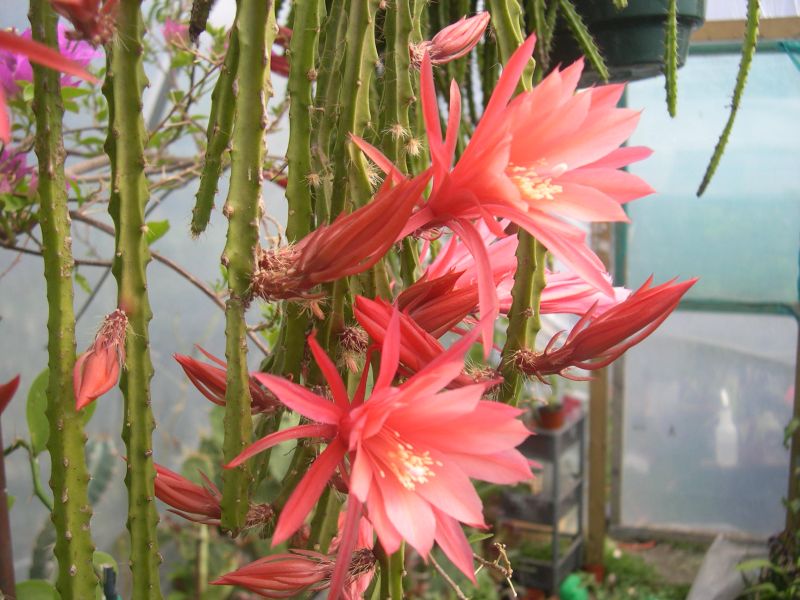|
[CACTUS]
|
Cacti in Bloom
About Cactaceae
The origins of cacti belong to the Americas, but today these plants can be found growing all over the world. They come in all shapes and sizes. Some are tiny shrubs lying low in the ground whereas others are tree-like rather menacing in appearance. And of course, in between, you will find the widest diversity of sculptural shape and patterns. There are names like opuntia and epiphyllum, mammilaria and parodia. Then there are the cereus family, lovely colunar standing tall and proud. Whatever their classification they all need to be seen and appreciated. Photos below are from the Desert Garden, at Huntington in San Marino, California.
Cacti in the Mediterranean
Other Forms of Cacti: APOROCACTUS and EPIPHYLLUM
These cacti grow in rocks and crevices, and feel quite happy in the fork of trees. They excel in rich humus soil andbright light, but needs to be shaded from very hot sun. By crossing these species with other epiphytic groups, a new generation of hybrids have emerged. They are called aporophyllum.

Aporophyllum Hybrid
Aoprocactus Flagelliformis
Epiphyllum Strictum
|
|







































